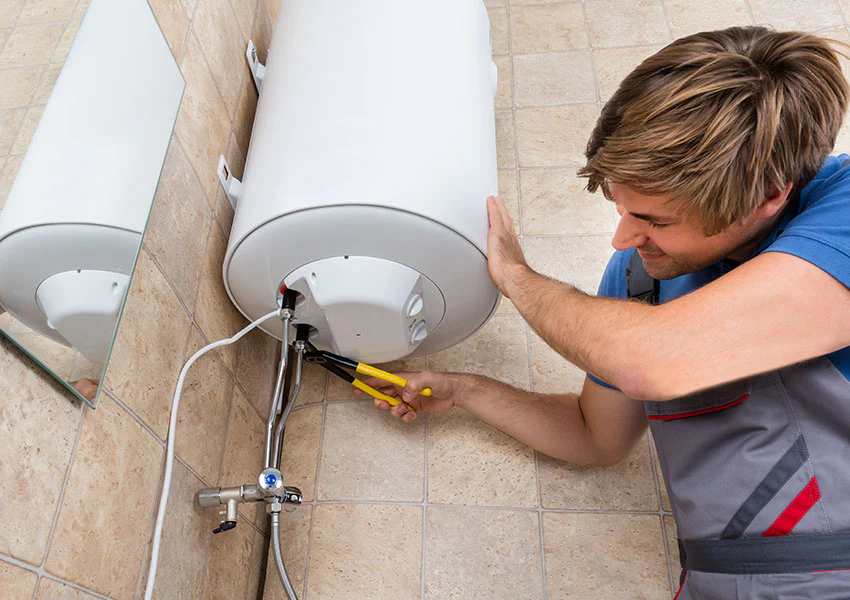Best Practices for Maintaining Your Home's Hot Water SystemStraightforward Methods to Care for Your Home's Hot Water System Effectively
Best Practices for Maintaining Your Home's Hot Water SystemStraightforward Methods to Care for Your Home's Hot Water System Effectively
Blog Article
Have you been searching for answers concerning Tips For Maintaining Your Hot Water Heater?

Hot water is necessary for daily convenience, whether it's for a rejuvenating shower or washing recipes. To guarantee your warm water system runs efficiently and lasts much longer, routine maintenance is vital. This short article gives sensible suggestions and understandings on exactly how to preserve your home's warm water system to prevent interruptions and costly repair work.
Intro
Preserving your home's hot water system may appear challenging, however with a couple of simple steps, you can ensure it runs efficiently for years to find. This guide covers whatever from understanding your warm water system to do it yourself maintenance suggestions and understanding when to contact professional help.
Relevance of Keeping Your Warm Water System
Normal upkeep not just extends the life-span of your hot water system however likewise guarantees it runs effectively. Neglecting maintenance can lead to reduced effectiveness, greater energy expenses, and also early failure of the system.
Indicators Your Hot Water System Demands Upkeep
Knowing when your warm water system needs focus can protect against major problems. Look out for indicators such as inconsistent water temperature level, odd sounds from the heating unit, or corroded water.
Comprehending Your Warm Water System
Before diving right into upkeep tasks, it's helpful to recognize the basic parts of your warm water system. Typically, this consists of the hot water heater itself, pipelines, anode poles, and temperature level controls.
Regular Monthly Upkeep Tasks
Routine regular monthly checks can help catch small problems before they escalate.
Flushing the Hot Water Heater
Purging your hot water heater eliminates sediment buildup, boosting performance and lengthening its life.
Monitoring and Replacing Anode Rods
Anode rods stop rust inside the storage tank. Checking and replacing them when worn out is crucial.
Checking and Changing Temperature Setups
Readjusting the temperature settings ensures ideal performance and safety and security.
Do It Yourself Tips for Maintenance
You can execute numerous maintenance tasks yourself to maintain your hot water system in top condition.
Looking for Leakages
On a regular basis check pipelines and connections for leaks, as these can lead to water damage and greater costs.
Checking Stress Alleviation Valves
Examining the pressure relief valve guarantees it operates appropriately and stops extreme pressure buildup.
Shielding Pipelines
Protecting hot water pipelines lowers heat loss and can conserve energy.
When to Call a Professional
While do it yourself upkeep is advantageous, some concerns need specialist know-how.
Complex Concerns Requiring Specialist Help
Instances include significant leaks, electric problems, or if your water heater is constantly underperforming.
Routine Professional Upkeep Benefits
Expert upkeep can include detailed evaluations, tune-ups, and making certain compliance with safety and security standards.
Final thought
Normal maintenance of your home's warm water system is essential for performance, longevity, and expense financial savings. By adhering to these suggestions and recognizing when to seek expert aid, you can ensure a reputable supply of warm water without unexpected interruptions.
How to Maintain an Instant Hot Water Heater
Before tinkering with your hot water heater, make sure that it’s not powered on. You also have to turn off the main circuit breaker and shut off the main gas line to prevent accidents. Also turn off the water valves connected to your unit to prevent water from flowing into and out of the appliance. 2. When you’re done, you have to detach the purge valves’ caps. These look like the letter “T” and are situated on either side of the water valves. Doing so will release any pressure that has accumulated inside the valves while at the same time avoid hot water from shooting out and burning your skin. 3. When the purge valves’ caps are removed, you have to connect your hosing lines to the valves. Your unit should have come with three hoses but if it didn’t, you can purchase these things from any hardware or home repair shops. You can also get them from retail stores that sell water heating systems. Read the user’s manual and follow it to complete this task properly. When the hosing lines are connected, open the purge port’s valves. 4. You should never use harsh chemical cleaners or solutions when cleaning your unit. Make use of white vinegar instead. It should be undiluted and you’ll probably use about 2 gallons. 5. Now flush your water heater. This task should probably take about 40 minutes. We can’t give you specific directions for this because the procedure is carried out depending on the type, model and brand of your heater. With that being said, refer to the user’s manual. 6. When you’re done draining the unit, you have to turn off the purge port valves again. Remove the hosing lines that you earlier installed on each of the water valves. Put the valve caps (purge port) back in their respective places and be very careful so as not to damage the rubber discs that are found inside these caps. 7. Now that everything’s back in place, check your user’s manual again to find out how to reactivate your water heating system. 8. Once it is working, turn one of your hot water faucets on just to let air pass through the heater’s water supply pipes. Leave the tap on until water flows smoothly out of it. https://www.orrplumbing.com/blog/2014/september/how-to-maintain-an-instant-hot-water-heater/

We are very inquisitive about Tips on Maintaining a Water Heater and I really hope you enjoyed the blog post. Those who liked our post please remember to share it. Thank you so much for your time invested reading it.
Book Inspection Report this page